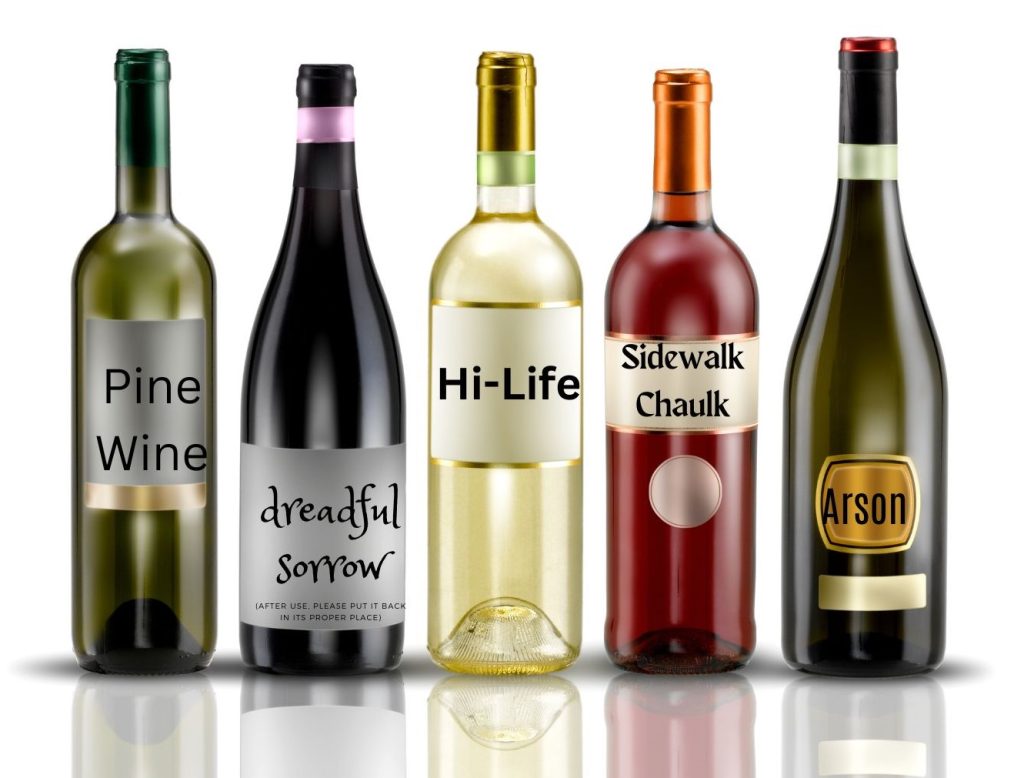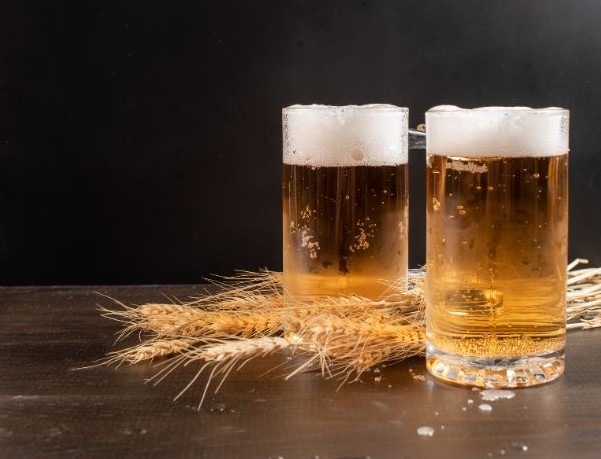===================== 0 =====================

CuppaThere are words in the English language we use to describe what we encounter using the senses and words that convey our emotions. Often these words mix and mingle as we experience something worth talking about. Descriptive words abound when we speak of the things we see and feel. The list narrows when it comes to taste and smell. These revelations often require comparisons to other things with which humans may have had a similar experience. Examples: tastes like over-ripe asparagus, smelled like a dead squirrel, or reminded me of Grandma’s peanut butter cookies (chances are this was something with peanut butter in it, but the describing gourmand was adding an emotional component). With our sense of taste, we tend to get crafty if we have to compare this to that as we often don’t have a standard set of words worthy of everyone’s understanding. This is where reviewers of wine, beer or tea get creative with their comparisons. Mouthfeel aside, these things have a taste which might be too complicated to convey with ordinary taste words. And so, reviewers get carried away and the resulting description gets really weird.
To the best of my knowledge, there are five tastes identifiable by the human tongue. Underworldliness is not one of them. Sweet, salty, bitter, sour and umami are the standard vocabulary we attach to how things taste. Umami is the one taste that is pretty open to interpretation. It means savory, but that could be a lot of things. Here’s a portion of a tea review that sparked my inner critic:
Grapefruit cup with the ripening feel of the underworldliness. –(Evil Snake King raw puer tea–distributed by TeaSource)

Winter hijinksI’m not sure what they usually imbibe up there in Roseville, Minnesota, home of the TeaSource company, but this review leads me to believe there might be a bit of devilry going on when there’s a shitload of snow on the ground and folks get bored and antsy for some entertainment. (Let’s confound those teetotalers in the southern half of the country just for our own amusement). So, I consulted the TeaSource catalog to see if this description was a one-off or if those Minnesotans are truly fucking with us for enjoying warmer winters while they freeze their hind ends off. Here are my findings:
…strong, primordial and raw, the cup is a landscape of sweet hay, damp wood, and herbaceous greens. –2006 Menghai Sheng Puer)
The cup tastes like sweet compost, anise and sarsaparilla –(2013 Shu Puer)
…aged, tippy loose leaf –(2007 Sheng Puer Supreme)
Gosh, I wish I knew what tippy tastes like. My in-house tea consultant says it means more leaf tips. I think perhaps they are trying to evoke the image of what it feels like after a night of light inebriation. As for the hay, damp wood and compost, well, I’ve never tried tasting any of those, at least not unless I’ve had a night of heavy inebriation and somehow ended up chawing on the soil in the vegetable garden. I’d like to make a short note here. We buy a lot of tea from TeaSource because they have a wide variety of good teas. Plus their catalog is entertaining. Puer (pronounced poo air) is a fermented tea (probiotic) which sometimes lives up to it’s pronounced name with the distinct aroma of underworldliness (aka rotting cat carcasses). Not all puer stinks, however, so if you wish to try one without driving the neighbors away, I’d advise you to consult with a knowledgeable tea drinker before investing in a 4 oz. bag.

Latest craze in wineSpeaking of inebriation, the wine industry has a similar creative vocabulary, used to impress the ordinary consumer. My younger brother, who trained as a sommelier, sent me the most unusual reviews based on his level of amusement. I don’t know what styles of wine or vinting origin these descriptions came from, so I can’t fully make fun of their oddball taste comparisons or take a swing at the actual wines. All I can say is, read the label carefully. I’d like to decant a few of these reviews into a clearer vessel and interpret these tastings in a manner more relatable to us garden-variety boozers.
WINE REVIEWS REVISITED
| SNOOTY WINE REVIEWER | MY INTERPRETATION |
| hints of a subtle mineral streak | Tastes like that time I licked a sidewalk |
| laden with cherry and plum at first which eventually turns to darker brooding flavors on the finish | My wife left me, so I’m drinking more wine and sobbing when I get to the end of the bottle |
| flowery bouquet with undertones of nutty blossoms, crunchy blueberry, wild asparagus and a touch of Folgers coffee | I smoked too much weed before I drank this |
| a hint of mouthwatering alpine acidity | I like to suck on pine needles |
| unabashedly full throttle | I drank it really fast |
| budding notes of evolution with smoke, campfire ash and iron ore | There was a fire at the winery |
I really couldn’t tell you what the note of evolution tastes like, but the writer of that review certainly knows their way around the elements. I often wonder why anyone would want to buy and drink something that tastes like iron ore or compost. These are not words my tongue is attracted to. Reviewers, I’m told, have an acute palate and can pick up varying flavors beyond what the ordinary consumer might find in the drink. Undercurrents, essences, notes or hints are the buzz words for affording a greater allowance in expressions of taste.

Taste the funkLastly, I thought since Asheville is the Beer Mecca of the South, with more breweries than you could visit in a month, I would look for some tasty beer reviews. The folks who review beer have a tough job since there are so many different kinds of beers these days and breweries seem to enjoy experimenting with unusual ingredients. Specific styles of beer should have certain tastes which reviewers (and average swillers) should be able to identify with the tongue. Some of these words make sense to me: hops, malts, a variety of fruits, chocolate, yeasts, etc. Though they are not nearly as outrageous as our best wine tasters, some fun words manage to seep into beer tasting vocabulary which I personally revel in: biscuits, grass, bubble gum, piney resin, funk. My local beer aficionado claims funk is a distinct flavor known to your more discerning partakers of the brew. Apparently, it’s not a compliment for said beer.
If you are not an avid beer drinker, you may have missed a trend in beer brewing–added flavors. Stuff we are all familiar with. Tastes we perhaps enjoy in another time and place. I figure you either like beer in its many styles and forms, or you don’t, and tossing in any of the following ingredients does not make it any more palatable if you can’t stand the stuff to begin with. Avocado, banana, chilies, coconut curry, pickles, bacon, Lucky Charms and oysters can all be found in a variety of brews. I am grateful I am not the beer reviewer who must taste either of the following beers: Hvalur (has whale testicles in it) or Rocky Mountain Oyster Stout (has bull testicles in it). I draw the line here and will not pass into that nightmare of tastings. I’ll assume they taste like chicken…cooked in beer.

Stay cool, my friendsAs the summer heat burns up the planet, and you continue to hibernate beneath your favorite air conditioning vent, remember to Google some fun brew reviews for general entertainment. And then, if you really want to taste that composty tea or a nice campfire ash wine, go ahead and order online. Soon autumn will arrive and you’ll be more willing to go out for a taste of bacon-flavored beer. Be sure to send me your review!
Cheers,
Cheryl
There actually is a quote on taste this week.




That’s a whale’s share of bull. Seriously, though, you continue to hit the proverbial nail on the “head”.
You punster you!
Ha ha ha. I was sure this was going to be a vegan rant. Lol. I’d like to say that whiskey tastes like chemicals. Yuk (taste testing in Ireland several years ago now). Love this post!
Isn’t it funny that some things are an “acquired taste”?
The thing which takes us beyond the basic sweet, sour, etc. Is actually our sense of smell. We don’t experience two things, like sweet taste and the smell of apples separately. Our brain combines them so all we are aware of, when we bite into an apple and taste it, is that a taste like an apple.
Many of the reviews include the aroma aspect as well as mouth-feel. It all goes together to render that complex experience.
You should probably write another blog post about kombucha reviews and adjectives.
I have never tasted kombucha. Now I’ll need to read some reviews and try the one with the most outrageous review!
I have had bacon flavored beer
And lived to tell the tale!!
For my $10 – yes, that’s what a high end draft beer costs these days – Burial Beer descriptions are nothing less than poetic. I even like the indescribable taste of their beers.
I have only one response…meet me at Forest Camp!
Most teas are simply yummy, I’m not putting words to them.
You didn’t mention coffee, which I’ve always loved the smell of but never drank (unless it was made up VERY fruffily—sugar, flavorings, milk), until this last year or so. I do love the taste of coffee and I can’t tell you why. I’m mostly going for the caffeine, but it tastes good (if it’s weak. One part coffee to four or more parts water).
As for beer and wine, one tastes like fermenting grass and the other like rotten grapes. Other alcoholic liquids…….chemicals. Yucky chemicals.
Another thought provoking read from C. P. 🙂
I’m with you on the fruffily-made coffee. As for wine, rotten grapes are what it’s all about! I often wonder who was the first human to come across some rotting grapes and said, “Hmmm…wonder what that atrocious-looking stuff tastes like!”